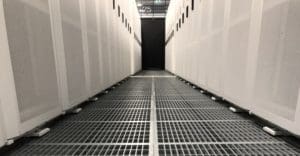Data centre infrastructure is the backbone of your operational efficiency and energy savings. At EziBlank, we understand the critical importance of optimising airflow management to enhance your data centre's performance. Our innovative blanking panels are designed to seamlessly integrate with your existing setup, reducing energy consumption and providing you with actionable insights. By investing in EziBlank solutions, you're not just upgrading your infrastructure; you're ensuring that your core knowledge assets are protected and performing at their best. Discover how we can help you maximise your investment and take control of your data centre’s efficiency.
What are the different types of data centers?
Data centres are the backbone of modern digital operations, and they come in various forms to meet diverse needs. From enterprise data centres that are privately owned and operated by a single organisation to colocation facilities where multiple businesses share the space, each type is designed to address specific operational requirements. Hyperscale data centres, with their vast capacity, support massive cloud computing needs, while edge data centres bring processing power closer to the source of data generation, reducing latency. Understanding these different types of data centres is essential for businesses looking to optimise their digital infrastructure.
Read More
Why Are Data Centers Important?
In an increasingly connected world, data centres have become the unsung heroes of our digital lives, powering everything from online shopping to streaming services and complex AI operations. These critical facilities store, process, and distribute vast amounts of data, ensuring that businesses and individuals can access the digital tools and information they need in real-time. The importance of data centres extends beyond mere storage; they are integral to the functioning of our digital economy, providing the backbone for everything from everyday internet usage to the advanced computing required for innovation and growth.
Read More
Data Center Checklist
A comprehensive data centre checklist is an invaluable tool for ensuring that all critical aspects of data centre management are addressed. This checklist typically covers a wide range of areas, including physical infrastructure, power management, cooling systems, security measures, and network connectivity. Key items might include verifying the integrity of power supply and backup systems, ensuring efficient cooling with proper airflow management and blanking panels, and confirming that all security protocols, such as access controls and surveillance, are in place. Additionally, regular maintenance schedules, disaster recovery plans, and compliance with industry standards should be reviewed and updated. Using a detailed checklist helps data centre managers maintain operational efficiency, minimise downtime, and ensure that the facility is prepared to meet current and future demands.
Read More
Patch Panel: What it is and why your data center needs it
A patch panel is a critical component in any data centre's network infrastructure, serving as a central hub where all network cables are connected and managed. This device allows for the efficient organisation and routing of network connections, making it easier to manage, maintain, and troubleshoot the network. By centralising connections in one location, a patch panel simplifies the process of changing network configurations or performing upgrades, reducing the potential for downtime. Additionally, it helps maintain a clean and organised cabling system, which is essential for optimal airflow and cooling efficiency within the data centre. Incorporating a patch panel into your data centre infrastructure enhances both the reliability and flexibility of your network, making it a vital investment for any modern data centre.
Read More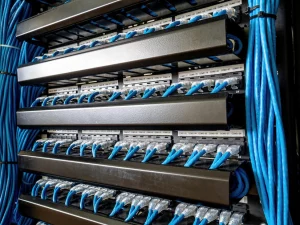
Hot Aisle vs Cold Aisle Containment
Hot aisle and cold aisle containment are two critical strategies used in data centres to enhance cooling efficiency and reduce energy consumption. In a cold aisle containment setup, cold air is contained within the aisle where the fronts of the server racks face each other, ensuring that only cool air is delivered directly to the equipment. This prevents the mixing of cold air with hot exhaust air, improving cooling efficiency. Conversely, hot aisle containment involves enclosing the aisle where the backs of the servers expel hot air. This containment captures and directs the hot air back to the cooling systems, preventing it from mixing with the cool air in the room. Both methods are effective, but the choice between hot and cold aisle containment depends on the specific design and cooling needs of the data centre. Implementing either strategy can lead to significant improvements in energy efficiency and overall system performance.
Read More
How to Maintain Your Data Center
Maintaining a data centre is crucial for ensuring its reliability, efficiency, and longevity. Regular maintenance involves several key practices, starting with routine inspections of power and cooling systems to prevent potential failures and optimise performance. Ensuring that all equipment, including servers and networking devices, is updated with the latest firmware and software patches is essential for security and functionality. Effective cable management and the use of blanking panels help maintain proper airflow, which is critical for cooling efficiency. Additionally, conducting regular backups and testing disaster recovery plans ensure that data is protected against unexpected events. By adhering to these maintenance practices, a data centre can operate smoothly, reduce downtime, and extend the lifespan of its infrastructure.
Read More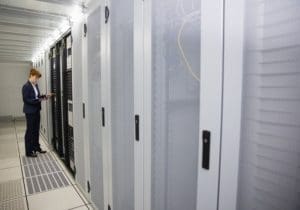
Guide to setting up a Data Center
Setting up a data centre requires careful planning and execution to ensure that the facility meets both current and future needs. The process begins with selecting an appropriate location that offers reliable power, cooling, and connectivity. The physical design of the data centre should incorporate efficient layout strategies, such as hot and cold aisle containment, to optimise airflow and cooling efficiency. Equipping the data centre with scalable infrastructure, including modular server racks and energy-efficient hardware, allows for future growth without major overhauls. Additionally, implementing robust power management systems, such as uninterruptible power supplies (UPS) and backup generators, is critical for ensuring continuous operation. Security measures, both physical and digital, must be in place to protect the data and infrastructure. Finally, ongoing monitoring and maintenance plans should be established to keep the data centre operating at peak performance. By following this guide, you can set up a data centre that is efficient, secure, and scalable.
Read More
Blanking Panels: The Ultimate Guide
Blanking panels are a crucial yet often overlooked component in data centre management, playing a vital role in optimising airflow and enhancing energy efficiency. These panels are designed to fill the empty spaces in server racks, preventing the recirculation of hot air into the cold aisle, which can otherwise lead to hotspots and reduced cooling efficiency. By directing cool air precisely to where it’s needed and ensuring that hot air is properly expelled, blanking panels help maintain optimal operating temperatures, reduce the workload on cooling systems, and ultimately lower energy costs. Available in various sizes and materials, blanking panels are easy to install and offer a cost-effective solution for improving data centre performance. Regular use and proper installation of blanking panels not only contribute to a more efficient and reliable data centre but also extend the lifespan of critical IT equipment.
Read More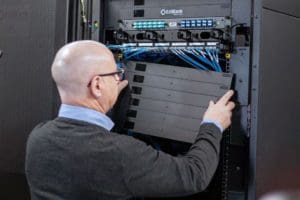
The Ultimate Guide to Data Centers
Data centres are the backbone of the digital world, housing the servers and networking equipment that power everything from websites to cloud computing services. A well-designed data centre must balance performance, efficiency, and security, with key considerations including location, infrastructure, power supply, cooling systems, and security measures. Effective airflow management, such as the use of blanking panels and hot/cold aisle containment, is essential for maintaining optimal temperatures and reducing energy consumption. Additionally, data centres must incorporate robust backup systems, such as uninterruptible power supplies (UPS) and generators, to ensure continuous operation in the event of power failures. As businesses increasingly rely on digital infrastructure, the role of data centres continues to expand, making it crucial to optimise their design and operations for reliability, efficiency, and scalability.
Read More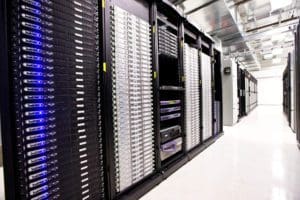
High performance directional floor tiles for high density equipment racks
High-performance directional floor tiles are a critical component in data centre design, specifically engineered to optimise airflow and cooling efficiency. These tiles are strategically placed within raised floor systems to direct cool air from the underfloor plenum towards the server racks, ensuring that the air reaches the equipment that needs it most. By guiding airflow precisely, directional floor tiles help maintain consistent temperatures across the data centre, prevent hotspots, and reduce the workload on cooling systems. This leads to more efficient cooling, lower energy consumption, and improved overall performance of the data centre. Incorporating these tiles into a data centre's design is an effective way to enhance both energy efficiency and operational reliability.
Read More